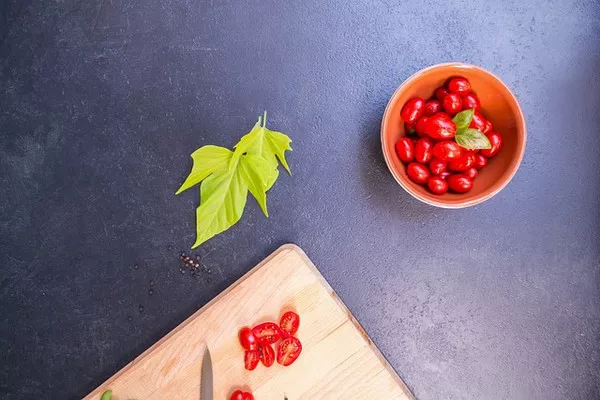Tomatoes (Solanum lycopersicum) are one of the most popular and widely cultivated vegetable crops globally, prized for their versatile culinary uses and nutritional benefits. To ensure optimal growth, health, and yield of tomato plants, proper care and management techniques are essential. One of the crucial practices in tomato cultivation is topping, which involves the strategic removal of the growing tip of the main stem. This article delves into the science and benefits of topping tomato plants, providing valuable insights into when and how this practice should be executed.
Understanding Topping: The Science Behind It
Topping, also known as pinching or pruning, is the deliberate removal of the terminal bud or growing tip of a tomato plant. This bud contains a hormone called auxin, which controls the growth of lateral branches and inhibits the growth of side shoots. By removing the terminal bud, auxin distribution is disrupted, stimulating the development of side branches and encouraging the plant to become bushier.
The main objective of topping is to optimize the plant’s structure, directing energy towards productive areas and enhancing fruit formation. Topped plants are more likely to produce an increased number of flower clusters and fruit-bearing branches, ultimately leading to higher yields and better-quality tomatoes.
Benefits of Topping Tomato Plants
Enhanced Air Circulation and Light Penetration: Topping tomato plants increases the space between branches, allowing for improved air circulation and light penetration throughout the plant. This reduces the risk of fungal diseases and creates a more favorable environment for photosynthesis, resulting in healthier foliage and better fruit development.
Increased Yield: Topping redirects the plant’s energy from vertical growth to lateral growth, leading to the development of multiple flowering branches. As a result, the plant produces more flowers and fruits, leading to a higher yield per plant.
Better Fruit Quality: When tomato plants are topped, the nutrients and energy are distributed among fewer fruits on each branch, which can lead to larger, more evenly sized, and better-tasting tomatoes.
Easier Harvesting: A bushier plant structure resulting from topping makes it easier to access and harvest ripe tomatoes. The fruits are also less likely to touch the ground, reducing the risk of damage or disease.
Sturdier Plant Structure: Topping encourages the growth of thicker and stronger lateral branches, making the plant more resistant to wind and weather conditions.
When to Top Tomato Plants
Timing is critical when it comes to topping tomato plants. The best time to perform this practice depends on the growth stage of the plant and local climate conditions. Generally, topping is recommended when the plant has reached a certain height or has produced a certain number of leaves.
A common guideline is to top the tomato plant when it has developed about 5-7 sets of true leaves. True leaves are those that emerge after the initial seed leaves (cotyledons). At this point, the plant is mature enough to handle the stress of topping without hindering its overall growth.
For determinate tomato varieties, which tend to grow to a specific height and produce fruit over a relatively short period, topping is generally not recommended. Indeterminate varieties, on the other hand, can benefit greatly from topping due to their continuous growth throughout the season.
Topping Techniques
Executing the topping technique correctly is crucial to avoid unnecessary stress to the plant. Here’s a step-by-step guide on how to top tomato plants effectively:
Choose the Right Branch: Select the main stem’s terminal bud, which is the topmost portion of the plant.
Use Clean Tools: Ensure your pruning shears or scissors are clean and sharp to make a clean cut, minimizing the risk of damaging the plant tissue.
Cut at the Right Angle: Make a clean cut just above a pair of healthy leaves or leaf nodes. The angle of the cut should be at approximately 45 degrees, which helps prevent water from collecting on the cut surface and reduces the risk of disease.
Remove Suckers: In addition to topping the main stem, it’s also important to regularly remove suckers – the small shoots that develop in the axils between the main stem and the lateral branches. Removing these suckers diverts the plant’s energy toward fruit production.
Monitor and Maintain: Regularly monitor the plant’s growth after topping and adjust the number of branches as needed to ensure proper airflow, light penetration, and overall plant health.
Conclusion
Topping tomato plants is a valuable practice that can significantly enhance their growth, yield, and fruit quality. By strategically removing the terminal bud and promoting lateral branching, gardeners can create bushier, more productive plants. Proper timing and technique are essential for successful topping, and careful monitoring post-topping is necessary to maintain the plant’s health.
Remember that while topping can have numerous benefits, excessive pruning or topping can lead to stress, reduced yields, and even plant damage. Therefore, it’s recommended to research and understand the specific needs of the tomato variety you’re cultivating and to consider local climate and growing conditions before implementing topping practices.
When executed with care and precision, topping tomato plants can contribute to a successful and bountiful harvest, bringing forth a delicious array of homegrown tomatoes that are not only a delight to the palate but also a source of gardening pride.


